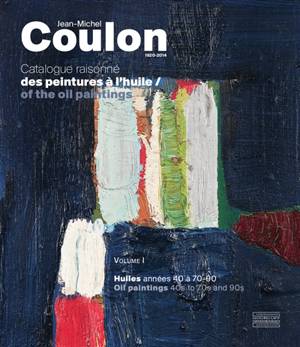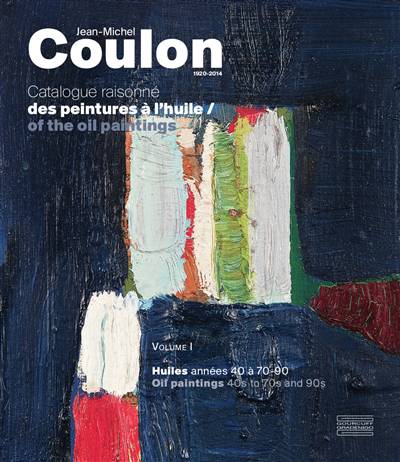
- Retrait gratuit dans votre magasin Club
- 7.000.000 titres dans notre catalogue
- Payer en toute sécurité
- Toujours un magasin près de chez vous
- Retrait gratuit dans votre magasin Club
- 7.000.0000 titres dans notre catalogue
- Payer en toute sécurité
- Toujours un magasin près de chez vous
Description
Jean-Michel Coulon
1920-2014
Jean-Michel Coulon a passé sa vie à créer, dessiner et peindre... dans un secret quasi-absolu. Il ne laisse personne entrer dans son atelier et à sa mort, en 2014, sa famille découvre une oeuvre structurée, intacte et inédite qui compte plus de 800 peintures et collages.
Dès 20 ans, il décide de se consacrer entièrement à la peinture. D'emblée ses oeuvres sont toutes abstraites. Au cours des années d'après-guerre il est introduit dans les cercles artistiques comme la seconde École de Paris et devient proche de peintres tels que Nicolas de Staël, André Lanskoy, Maria Helena Vieira da Silva et Arpad Szenes. Ses débuts sont prometteurs puisqu'à 30 ans il expose seul à la galerie Jeanne Bucher dont le livre d'or témoigne de la présence d'artistes qui connaîtront bientôt la célébrité. Parmi eux, Rothko, Vieillard, Deyrolle ou Arnal. L'année suivante, en 1950, il participe à une exposition de groupe à New York. Ensuite, cependant, sans jamais cesser de créer, il refusera presque toutes les propositions d'exposition.
Cet ouvrage propose de découvrir le travail d'un artiste qui a refusé la reconnaissance du grand public de son vivant, alors qu'il a dédié sa vie à son oeuvre.
Jean-Michel Coulon spent his life creating, drawing and painting - working in conditions of almost total secrecy. On his death in 2014, his family discovered in his studio - which no one had been allowed to enter during his lifetime - an entire oeuvre of over 800 paintings and collages, cogent and complete, that had never before been seen in public.
Coulon was just twenty when he decided that he would devote his life to painting. From the outset, he worked exclusively in abstraction. In the period after the Second World War he was introduced into artistic coteries such as the Second School of Paris, and he became close to artists including Nicolas de Staël, André Lanskoy, Maria Helena Vieira da Silva and Arpad Szenes. His early work showed considerable promise, and at the age of thirty he was offered his first solo show at the Galerie Jeanne Bucher, where visitors included a number of artists who would soon be famous, such as Rothko, Vieillard, Deyrolle and Arnal. The following year, 1950, he took part in a group exhibition in New York. After that, although he never stopped painting, he was to refuse virtually all invitations to exhibit his work.
This book reveals the work of an artist who devoted his life to his art, but who refused to accept public recognition during his lifetime.
Spécifications
Parties prenantes
- Auteur(s) :
- Editeur:
Contenu
- Nombre de pages :
- 207
- Langue:
- Français, Anglais
Caractéristiques
- EAN:
- 9782353402793
- Date de parution :
- 21-06-18
- Format:
- Livre relié
- Dimensions :
- 250 mm x 300 mm
- Poids :
- 1562 g

Les avis
Nous publions uniquement les avis qui respectent les conditions requises. Consultez nos conditions pour les avis.






